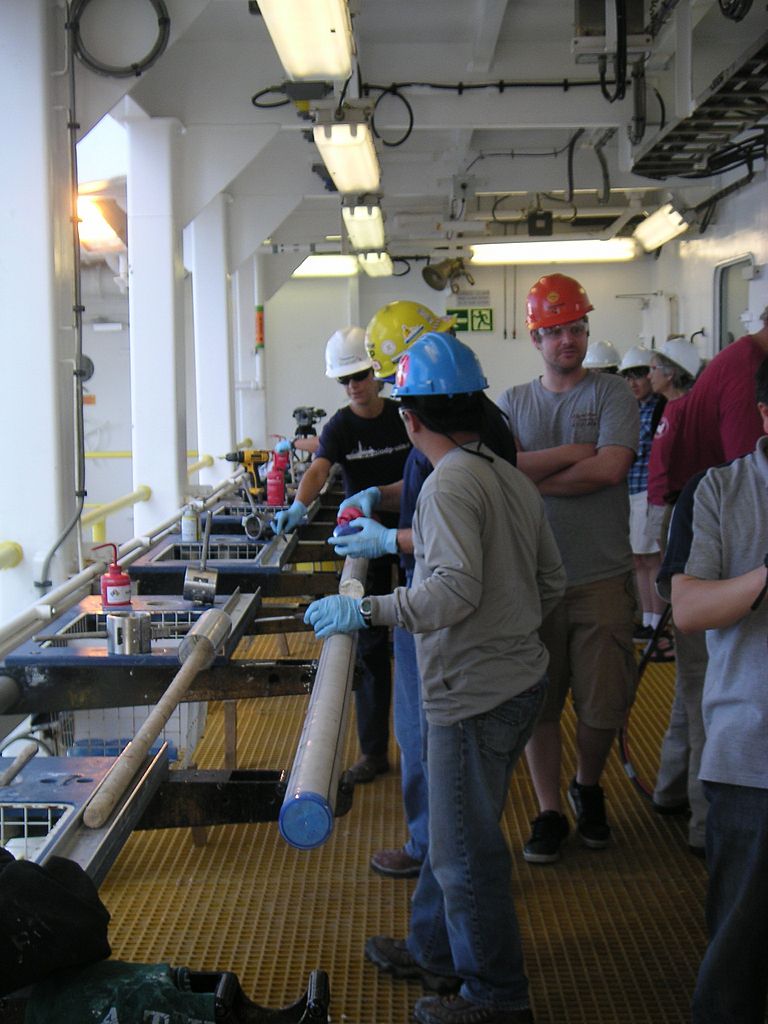55 Million years Carbon Cycle
Cores from the Pacific Ocean allow precise reconstruction of Conozoic environmental conditions
At the mention of carbon dioxide most people may think of global warming. But for geochemists the problem is much more extensive. „Actually the current climate debate is not only about temperatures but about the global carbon cycle“, says Dr Ed Hathorne from GEOMAR | Helmholtz Centre for Ocean Research Kiel. The term carbon cycle describes the natural exchange of carbonaceous compounds like carbon dioxide between the atmosphere, biosphere, oceans, and seafloor. „Humanity is perturbing this cycle. Global warming is only one symptom of this interference“, Dr Hathorne stresses.
To estimate the consequences of this interference he and many colleagues worldwide are trying to improve the understanding of the processes which have regulated the carbon cycle in the past. A group of international scientists have now accomplished a significant step towards this aim. In the international scientific magazine “Nature“ they present the reconstruction of an important indicator of the carbon cycle over the past 55 Million years with an unprecedented resolution. “The study is about the Calcite Compensation Depth. The CCD is defined as the depth in the oceans at which the mineral calcite is dissolved. From the CCD you can draw conclusions about the concentration of carbon dioxide in the atmosphere“, Dr Hathorne explains.
The study is based on sediment cores recovered from the seafloor of the equatorial Pacific ocean during 2 two-month expeditions of the US drilling vessel JOIDES RESOLUTION in spring 2009. The expedition took place in the framework of the Integrated Ocean Drilling Program IODP.
During one expedition Dr Hathorne was head of the JOIDES RESOLUTION’s chemistry lab, where the calcite concentration of the cores was measured. „The shells of micro organisms consist of calcium carbonate. Below the CCD hardly any biological remains made from carbonate are found. Instead the sediment consists mostly of clay“, says Dr Hathorne.
With the measurements conducted in the chemistry lab of the JOIDES RESOLUTION the authors of the Nature study were able to reconstruct the ups and downs of the CCD in the Cenozoic. 55 million years ago it was between 3,300 and 3,600 metres. 52 million years ago it went up to 3,000 metres before it suddenly deepened to 4.6 km about 34 million years ago. 10.5 million years ago it reached 4,800 metres. Today it lies at about 4,6 km.
„We knew the general pattern, but with the new data we have a much better resolution in time and depth. So we can identify fluctuations of the CCD which are rather short on geological timescales“, explains Dr Hathorne. That leads to a better understanding of the carbon cycle in the Cenozoic and in general.
Reference:
Pälike, H., et al. (2012): A Cenozoic record of the equatorial Pacific carbonate compensation depth. Nature, 488, http://dx.doi.org/10.1038/nature11360
![[Translate to English:]In 2009 the US drilling vessel JOIDES RESOLUTION recovered several cores from the ocean floor of the Pacific. With theses cores scientists reconstructed 55 million yeras of carbon cycle. Photo: P. Linke, GEOMAR [Translate to English:]In 2009 the US drilling vessel JOIDES RESOLUTION recovered several cores from the ocean floor of the Pacific. With theses cores scientists reconstructed 55 million yeras of carbon cycle. Photo: P. Linke, GEOMAR](/fileadmin/_processed_/4/9/csm_Joides_Resolution_S0165_DSCN2000_Peter-Linke_01f2ca110f.jpg)



